It looks like you're using an Ad Blocker.
Please white-list or disable AboveTopSecret.com in your ad-blocking tool.
Thank you.
Some features of ATS will be disabled while you continue to use an ad-blocker.
share:
Some interesting information on the WTC fireproofing.
media.corporate-ir.net...
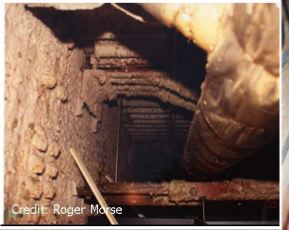
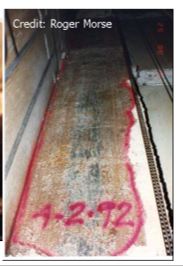
Something to think about.
Anyone care to guess what happens in a building with defective fireproofing when is burns?
Mod Edit: Long Quote – Please Review This Link.
[edit on 27/3/2006 by Umbrax]
Roger Morse, Morse Associates: My name’s Roger Morse. I’m an architect. My practice is centered largely around forensic investigations of buildings. As part of that work, I investigated the fireproofing in hundreds of buildings, maybe in thousands of locations. One of the things that I was called upon to do was to look at the fireproofing in the World Trade Center. I did that over about a ten year period of time, starting in the early 1990s, and the last time I was in the building was in June of 2001. There were problems with the fireproofing in the World Trade Center.
I thought that NIST ought to know of those problems, so that was why that I’m here today, that – please understand that the problems that existed in the World Trade Center towers are not unique to the World Trade Center towers. These are generic sort of problems, they exist in many high rise buildings all over the United States, certainly, and it’s to my knowledge, into Europe.
This is a slide of the fireproofing on a long span joists. This is the end of the long span joist. The red color that you see toward the bottom is the red lead primer that’s on the joist. You can see that the fireproofing in this location is extremely thin. It’s certainly not the three-quarters of an inch that was indicated in the ASCE report.
media.corporate-ir.net...


Something to think about.
Anyone care to guess what happens in a building with defective fireproofing when is burns?
Mod Edit: Long Quote – Please Review This Link.
[edit on 27/3/2006 by Umbrax]
"I believe that the concept of the building performance and structure is very well at hand and I'm very impressed. My impression of the report that
I saw online was that it is exquisite" said one attendent. lol.
Another staged event for the sheeple.
Another staged event for the sheeple.
Personally I don't think it would of mattered whether or not it had fire proofing.
Although I cannot really comment on it, because I am not a Fire Engineer or anything.
Although I cannot really comment on it, because I am not a Fire Engineer or anything.
Originally posted by aelphaeis_mangarae
Personally I don't think it would of mattered whether or not it had fire proofing.
Although I cannot really comment on it, because I am not a Fire Engineer or anything.
All you need to know is that bare naked steel could have withstood those fires. There's been a lot of discussion on this. Open atmosphere fires don't burn as hot as NIST wants them to, so there's a problem heating the steel to sufficient temperatures. Again, with just bare naked steel. No fireproofing is taken into account to begin with.
All you need to know is that bare naked steel could have withstood those fires. There's been a lot of discussion on this. Open atmosphere fires don't burn as hot as NIST wants them to, so there's a problem heating the steel to sufficient temperatures. Again, with just bare naked steel. No fireproofing is taken into account to begin with.
Correct. Although I am not the type of person to comment. I know someone who can.
Kevin Ryan, who tested the steel for Underwriters labs.
en.wikipedia.org...
Howard I just dont get it. You know enough to know something was wrong with the way those buildings came down. You have to know with your ability to
get info off the net, that fire will not cause a global collapse that goes stright down. Out of a million collapses due to fire you areant going to
get one to go straight down.
No way.
If they came down like that you think you could talk anyone from going into a burning building? You know what a Firefighter has to do, I would not go in if I thought that at least one portion will give way before another.
Not one in a million and we had three collapse staight down that day due to fire. Fireproofing! No way are you going to get 47 collumns to heat at the same time, same temperature for it to collapse like that, I dont care if non of it was fireproofed.
You know what happens when a structure fire gets compartmentalized? It usually happens from a firewall, but sometimes just drywall can keep it out, fire can be a strange beast, but it didnt take those buildings straight down.
343 brothers didnt get out because they knew they were safe from collapse!! Scene safety, there is no way they would have been that many on the inside if there was a chance for collapse!
No way.
If they came down like that you think you could talk anyone from going into a burning building? You know what a Firefighter has to do, I would not go in if I thought that at least one portion will give way before another.
Not one in a million and we had three collapse staight down that day due to fire. Fireproofing! No way are you going to get 47 collumns to heat at the same time, same temperature for it to collapse like that, I dont care if non of it was fireproofed.
You know what happens when a structure fire gets compartmentalized? It usually happens from a firewall, but sometimes just drywall can keep it out, fire can be a strange beast, but it didnt take those buildings straight down.
343 brothers didnt get out because they knew they were safe from collapse!! Scene safety, there is no way they would have been that many on the inside if there was a chance for collapse!
You have voted LoneGunMan for the Way Above Top Secret award. You have used all of your votes for this month. Great post.
No need to quote the entire post directly above you. Thanks. - Umbrax
[edit on 27/3/2006 by Umbrax]
No need to quote the entire post directly above you. Thanks. - Umbrax
[edit on 27/3/2006 by Umbrax]
They did not know they were safe from collapse, and they were on the way out when the second tower fell. Many were in the sky lobbies, exhausted from
the climb while others were busy attmepting to triage and ferry people inthe right direction.
They were told to get out, but due to lack of communication and faulty equipment, may were not warned.
The fireproofing is intended to give the structure 2 hours max, and the WTC had nothing. Look up the new WTC 7 structure, and you will find they used more than 2 x the required amount. To state that it is not needed for protection makes no sense. Why use it if it is not worth it, and if it is not worth it, you are stating that there is nothing to save the steel. So, which is it?
They were told to get out, but due to lack of communication and faulty equipment, may were not warned.
The fireproofing is intended to give the structure 2 hours max, and the WTC had nothing. Look up the new WTC 7 structure, and you will find they used more than 2 x the required amount. To state that it is not needed for protection makes no sense. Why use it if it is not worth it, and if it is not worth it, you are stating that there is nothing to save the steel. So, which is it?
Good post LoneGunMan. Makes sense. Yup those were three buildings that collapsed straight down. And one of them wasn't even hit by a plane.
Troy
Troy
Originally posted by bsbray11
Originally posted by aelphaeis_mangarae
Personally I don't think it would of mattered whether or not it had fire proofing.
Although I cannot really comment on it, because I am not a Fire Engineer or anything.
All you need to know is that bare naked steel could have withstood those fires.
Please read this paper by a couple of gentlemen from the University of Sheffield, in the U.K.
Abstract
Despite severe local damage induced by the impact by two hijacked airplanes, the structures of WTC 1&2 were able to sustain 103 and 56 minutes of the subsequent fire on September 11 2001. The purpose of this study is to contribute to the understanding of the behaviour of the twin towers during these events in structural fire engineering terms. A series of numerical analyses were conducted using the FE package Vulcan, on the behaviour of the typical long-span composite floor truss in the fire. The composite truss is considered under a variety of scenarios, varying the boundary conditions, the degree of protection and loading. The time-temperature relationship of the steel truss components and the LWC slab have been obtained using Eurocode formulae and thermal analysis software respectively. The results are presented as graphs of deflections against time.
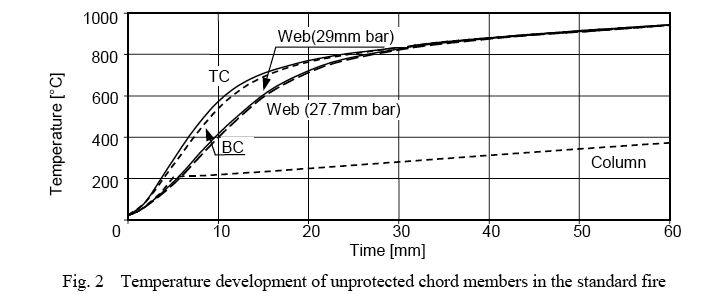
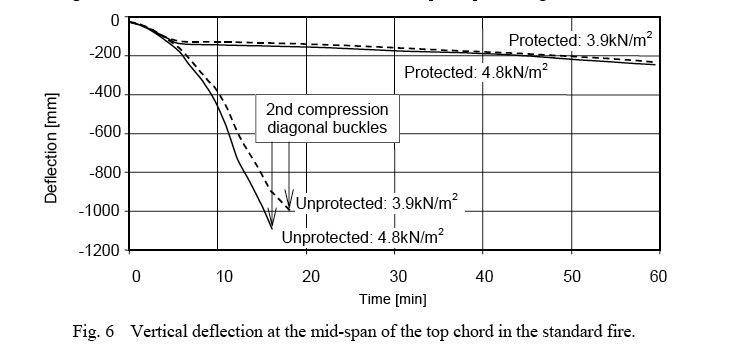
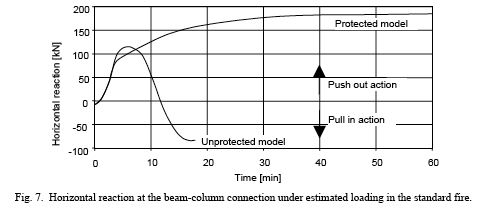

As you can clearly see from those graphs, unprotected steel trusses are extremely vulnerable to failure in a fire.
Not one in a million and we had three collapse staight down that day due to fire. Fireproofing! No way are you going to get 47 collumns to heat at the same time, same temperature for it to collapse like that, I dont care if non of it was fireproofed.
That's not true. For a collapse to take place probably about half the columns would of had to of been completely severed..as well as exterior columns.
However the collapse of the North Tower clearly shows that all of the columns did some how pretty much lose all their strength at the same time.
Something NIST and others have yet to explain, or have they Howard?
I think deep down Howard knows the truth, either that or he is working for them. But I think it's good we have these debates anyway.
Originally posted by aelphaeis_mangarae
All you need to know is that bare naked steel could have withstood those fires. There's been a lot of discussion on this. Open atmosphere fires don't burn as hot as NIST wants them to, so there's a problem heating the steel to sufficient temperatures. Again, with just bare naked steel. No fireproofing is taken into account to begin with.
Correct. Although I am not the type of person to comment. I know someone who can.
Kevin Ryan, who tested the steel for Underwriters labs.
en.wikipedia.org...
Wrong.
The trusses were certified to meet building codes for fire resistance with fireproofing installed.
U.L. tested the assemblies to standard ASTM protocols, which meant that the truss assemblies were tested with fireproofing installed.
Don't believe me? Ask Kevin Ryan.
Originally posted by LoneGunMan
You know what happens when a structure fire gets compartmentalized? It usually happens from a firewall, but sometimes just drywall can keep it out, fire can be a strange beast, but it didnt take those buildings straight down.
How much of the drywall do you think was still intact after the planes hit?
Besides the buildings were built with open plan offices in mind. not too many compartments, but a lot of fuel in the form of cubicles, paper, etc.
Some more info on the fireproofing.
scott-juris.blogspot.com...
scott-juris.blogspot.com...
scott-juris.blogspot.com...
Of course, how thick the fireproofing was on the impact floors is a moot point, since the force of the impact and the subsequent fuel air explosions would have knocked it off the trusses anyway.
keep in mind that the diagonal chords of these trusses were little more than thin steel bars, with little surface area for the fireproofing to adhere to. imagine a 1 inch rod with 2 inches of fireproofing on it. The effective diameter of the fireproofing on that rod is now 4 inches. So making the fireproofing thicker on these components probably increased its vulnerability to being knocked off by the impacts and fuel explosions.
In addition, as was pointed out in my first post, retrofitting fireproofing after the ducts, conduits, and ceiling grids have been installed is not always effective.
Back when Robertson did his plane study, he overlooked the towers'
resistance to fire. And now that construction was under way, the
fireproofing that the Port Authority was using to protect the thin steel
components only heightened the towers' vulnerability to fire. Instead of
the heavy masonry that protects the steel of structures like the Empire
State Building, the authority chose a newly invented lightweight, low-cost
product called mineral wool, which is sprayed as a kind of slurry onto
steel, where it dries and forms an insulating coating.
The idea of fireproofing is to protect a building's steel from becoming
too hot and buckling if a fire breaks out. But even during construction,
the spray-on material had problems staying attached to the steel of the
World Trade Center. Rain would often wash the fireproofing off. When it
was attached to steel that was rusty, it would flake off even without
rain. The Port Authority still insists that its inspections caught the
problems and that whenever fireproofing fell off, it was reapplied. But
doubts about the product, which was just then coming into widespread use,
never went away. It didn't help matters when it became known that the
contractor charged with applying the fireproofing, Mario & DiBono
Plastering, was connected to the Mafia. John Gotti was later caught on
tape explaining that Louis DiBono, the company's president, had to die for
the sin of disrespect. DiBono's body was found riddled with bullets in the
basement parking garage of the trade center in 1990. (''He refused to come
in when I called,'' Gotti explained on the tape.)
Port Authority officials have defended DiBono's work -- at least when it
came to applying fireproofing. But decades later, in the mid-1990's, a
Port Authority engineer named Frank Lombardi discovered that the thickness
of the fireproofing on the trusses would have been inadequate to protect
the steel even if it had been applied perfectly. It was only half as thick
as it should have been. Whoever worked out the necessary thickness had, at
best, been mistaken. Lombardi's best guess is that the faulty calculations
were done by someone in the World Trade Department, a euphemism for
employees who reported directly to Tozzoli. But Lombardi says that he does
not know for sure.
scott-juris.blogspot.com...
A midnight
blaze in February 1975, which should have been merely a nuisance, turned
into a debacle. The fire, set by a custodian turned arsonist, started on
the 11th floor of the north tower and over three hours spread up and down
into six other floors.
The blaze exposed two major weaknesses in the center's fire-protection
systems: there were no sprinklers in the building to extinguish the fire
-- as was true in most high-rises of the day -- and critical fireproofing
was missing, allowing burning utility wires to spread the fire between the
floors. What's more, the tower's core acted like a chimney, sending great
plumes of smoke upward. There was no threat that the building would
collapse, but it was an early warning sign of just how unpredictable a
fire in the sky could be. If it hadn't occurred in the middle of the
night, Fire Commissioner John T. O'Hagan later wrote, ''the rescue problem
would have been tremendous.'
Then in 1995, when Lombardi discovered that the
fireproofing on the floor trusses was only half as thick as it should have
been, he set about trying to fix the problem, though somewhat randomly: he
ordered crews to apply new fireproofing each time renovations resulted in
the opening up of the ceilings.
scott-juris.blogspot.com...
In his 72nd-floor office in the north tower, Lombardi felt the room jerk
to and fro. At first he thought there had been a big earthquake; then he
saw the bottom edge of a fireball out of his window. He heard people
screaming in an elevator, and the terror he felt in 1993 came back to him.
With the nozzle from a fire hose and a staple gun, Lombardi worked to pry
open the elevator doors. Then he hustled down a stairway himself. And as
he did, the fires began to spread. In the north tower, Lombardi's effort
to thicken the spray-on fireproofing, begun in the mid-1990's, had been
carried out on all the floors struck by the jetliner; by contrast, in the
south tower, all but one of the impact floors had not been upgraded.
scott-juris.blogspot.com...
Of course, how thick the fireproofing was on the impact floors is a moot point, since the force of the impact and the subsequent fuel air explosions would have knocked it off the trusses anyway.
keep in mind that the diagonal chords of these trusses were little more than thin steel bars, with little surface area for the fireproofing to adhere to. imagine a 1 inch rod with 2 inches of fireproofing on it. The effective diameter of the fireproofing on that rod is now 4 inches. So making the fireproofing thicker on these components probably increased its vulnerability to being knocked off by the impacts and fuel explosions.
In addition, as was pointed out in my first post, retrofitting fireproofing after the ducts, conduits, and ceiling grids have been installed is not always effective.
Don't believe me? Ask Kevin Ryan.
Please tell me you are joking Howard. Kevin said himself that even if the steel wasn't fire proofed it still would of easily withstood the temperature Jet Fuel/Office Furniture could of created.
I know that Kevin is part of SPINE (Scientific Panel Investigating Nine Eleven.)
physics911.org...
Did you read that letter Kevin sent to NIST Howard?
Then have Kevin explain the ASTM test for the floor truss assembly.
That is how the fire ratings are determined.
Since the test was conducted with the fireproofing applied, how does he know what the floor truss will do with no fireproofing on it?
That is how the fire ratings are determined.
Since the test was conducted with the fireproofing applied, how does he know what the floor truss will do with no fireproofing on it?
Originally posted by HowardRoark
As you can clearly see from those graphs, unprotected steel trusses are extremely vulnerable to failure in a fire.
Howard, those were done on 3cm pieces of steel. And I seriously doubt the fire they used accurately represented what would have been burning in the WTC Towers, unless they're going for flashover temps, in which case they wouldn't have anywhere near an hour.
[edit on 28-3-2006 by bsbray11]
Originally posted by aelphaeis_mangarae
That's not true. For a collapse to take place probably about half the columns would of had to of been completely severed..as well as exterior columns.
More like 3/4 rather than half in the relevant floors if you average out the safety factor ratings and all that.
Originally posted by HowardRoark
Originally posted by aelphaeis_mangarae
All you need to know is that bare naked steel could have withstood those fires. There's been a lot of discussion on this. Open atmosphere fires don't burn as hot as NIST wants them to, so there's a problem heating the steel to sufficient temperatures. Again, with just bare naked steel. No fireproofing is taken into account to begin with.
Correct. Although I am not the type of person to comment. I know someone who can.
Kevin Ryan, who tested the steel for Underwriters labs.
en.wikipedia.org...
Wrong.
The trusses were certified to meet building codes for fire resistance with fireproofing installed.
U.L. tested the assemblies to standard ASTM protocols, which meant that the truss assemblies were tested with fireproofing installed.
Don't believe me? Ask Kevin Ryan.
One small point Kevin Ryan wouldn't know, he didn't test the steel. He worked for the Water Testing labs at EHL a sub group of UL. He had nothing to do the steel nor is he qualified in that area.
[edit on 28-3-2006 by Clark_Kent]
Roger Morse was doing well until he said "One of the problems is obstructions from ductwork, you can see that the ductwork has made it virtually
impossible to get to the, for the fireproofing applicator to get to the top chord of the truss in this location. "
I was willing to let that slide, just as whoever typed out his statement let slide what he was actually talking about "virtually impossible to get to the????"
then the next line he says
"Ceilings that are in place before the fireproofing is installed can make it difficult for the applicator, and then difficult for the inspector to determine what's gone on."
His credibility is worthless imo.
Show me one instance of fire protection being applied to steel after the ceiling has been fitted.
I was willing to let that slide, just as whoever typed out his statement let slide what he was actually talking about "virtually impossible to get to the????"
then the next line he says
"Ceilings that are in place before the fireproofing is installed can make it difficult for the applicator, and then difficult for the inspector to determine what's gone on."
His credibility is worthless imo.
Show me one instance of fire protection being applied to steel after the ceiling has been fitted.
new topics
-
Happy Birthday OZZY
Music: 2 hours ago -
Chinese national busted in LA sending weapons to NK
World War Three: 3 hours ago -
South Korea declares martial law for first time in 50 years over North Korea threat
World War Three: 5 hours ago -
Alien warfare predicted for December 3 2024
Aliens and UFOs: 9 hours ago
top topics
-
Alien warfare predicted for December 3 2024
Aliens and UFOs: 9 hours ago, 13 flags -
South Korea declares martial law for first time in 50 years over North Korea threat
World War Three: 5 hours ago, 8 flags -
Chinese national busted in LA sending weapons to NK
World War Three: 3 hours ago, 4 flags -
Happy Birthday OZZY
Music: 2 hours ago, 3 flags
active topics
-
Biden pardons his son Hunter despite previous pledges not to
Mainstream News • 139 • : WeMustCare -
Salvatore Pais confirms science in MH370 videos are real during live stream
General Conspiracies • 43 • : lostgirl -
Statements of Intent from Incoming Trump Administration Members - 2025 to 2029.
2024 Elections • 17 • : nugget1 -
President-Elect DONALD TRUMP's 2nd-Term Administration Takes Shape.
Political Ideology • 274 • : WeMustCare -
Alien warfare predicted for December 3 2024
Aliens and UFOs • 44 • : BeyondKnowledge3 -
Happy Birthday OZZY
Music • 4 • : chiefsmom -
Chinese national busted in LA sending weapons to NK
World War Three • 13 • : BeyondKnowledge3 -
Never say Never?
Science & Technology • 60 • : andy06shake -
Could Biden pardon every illegal alien
Social Issues and Civil Unrest • 25 • : marg6043 -
Australia passes social media ban for children under 16
Social Issues and Civil Unrest • 30 • : twistedpuppy
